

William Stopford
Every car discontinued in Australia in 2025
11 Hours Ago
The 2021 Hyundai Kona is a cracking looker, offering good performance, handling and ride. A tight boot might limit its overall appeal though.
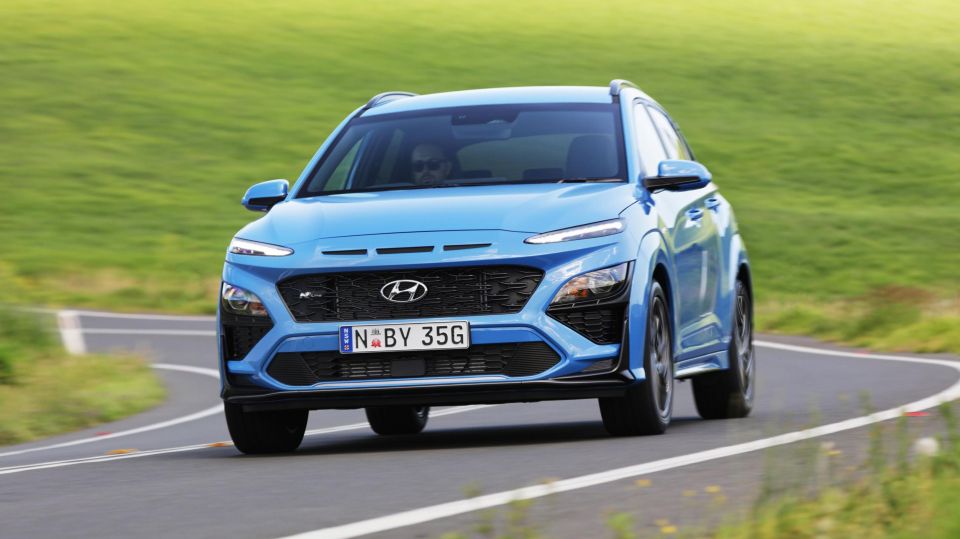


Senior Road Tester
New from
$28,200
excl. on-roads

Senior Road Tester
New from
$28,200
excl. on-roads


Senior Road Tester
New from
$28,200
excl. on-roads

Senior Road Tester
New from
$28,200
excl. on-roads
Where expert car reviews meet expert car buying – CarExpert gives you trusted advice, personalised service and real savings on your next new car.
It might be one of the brand’s smallest models, but in 2020, the Hyundai Kona made up a staggering 23 per cent of Hyundai sales in Australia. Not bad for a model that only launched three years ago.
It’s a car which has consistently swapped podium positions with rivals like the Mazda CX-30, Mitsubishi ASX and Kia’s latest star in the upward-trending small SUV segment, the Seltos.
It should come as no surprise Hyundai has rolled out a facelifted Kona for 2021, complete with new engines, improved tech, and a new look. For those who want a bit more go from their Kona, there are tweaked N Line versions for the first time, gaining more power, bigger brakes, and enhanced suspension tuning.
The new look and technology comes at cost, with the update carrying as much as a $2300 premium over the outgoing model. That only gets you 17 litres more boot space too, an ongoing setback for Kona against its roomier competitors.
Nevertheless, the new Kona is a very appealing package with more kit than ever before, even in base trim, as well as a suite of more advanced safety systems for peace of mind.

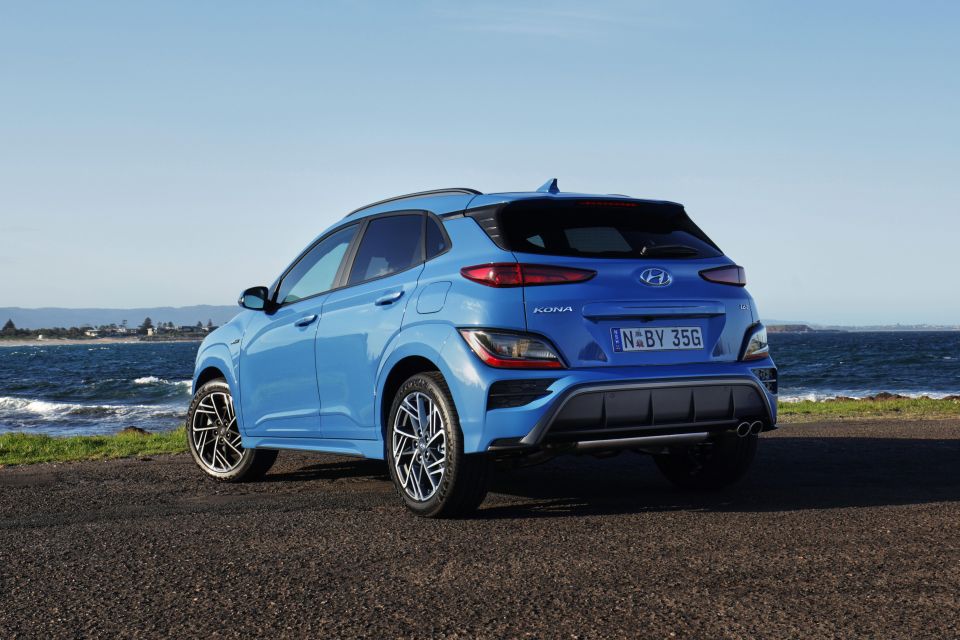
You get the feeling that the new-look Kona is on the money with its styling tweaks, because in the last 24 hours I’ve had some non-car-loving friends give me the proverbial thumbs-up for its more resolved face.
I know exactly where they’re coming from, because I own a pre-update Kona Highlander (commandeered by my oldest daughter). My decision to go with a Kona was predominantly based on the styling and level of standard kit, and the latest version ups the ante on both counts.
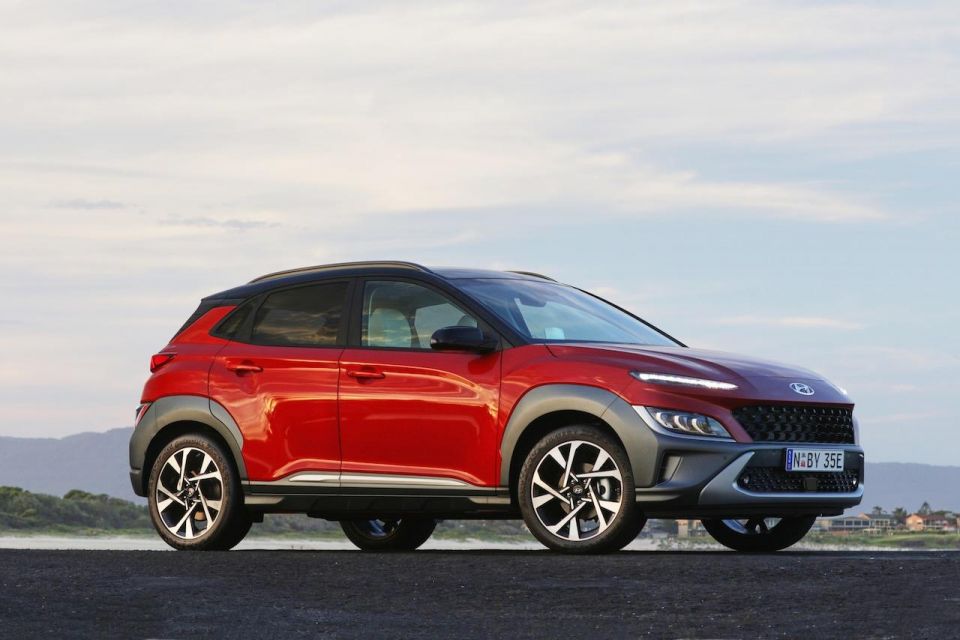
The base price has risen by $2300 excluding on-road costs, while other variants have seen increases of between $1000 and $2140. In response, Hyundai has added more kit and safety systems, as well as new engines and of course, the new look. But there’s been a bit of give and take too.
Previously, you could get a Kona Highlander with a 1.6-litre turbo-four, but in the new model range your only option is the same naturally-aspirated 2.0-litre petrol engine offered in the entry-level ‘Kona’ variant.
In fact, only the new N Line models get the updated 1.6-litre turbo.
Pricing for the new 2021 Kona range is as follows:
All prices exclude on-road costs.

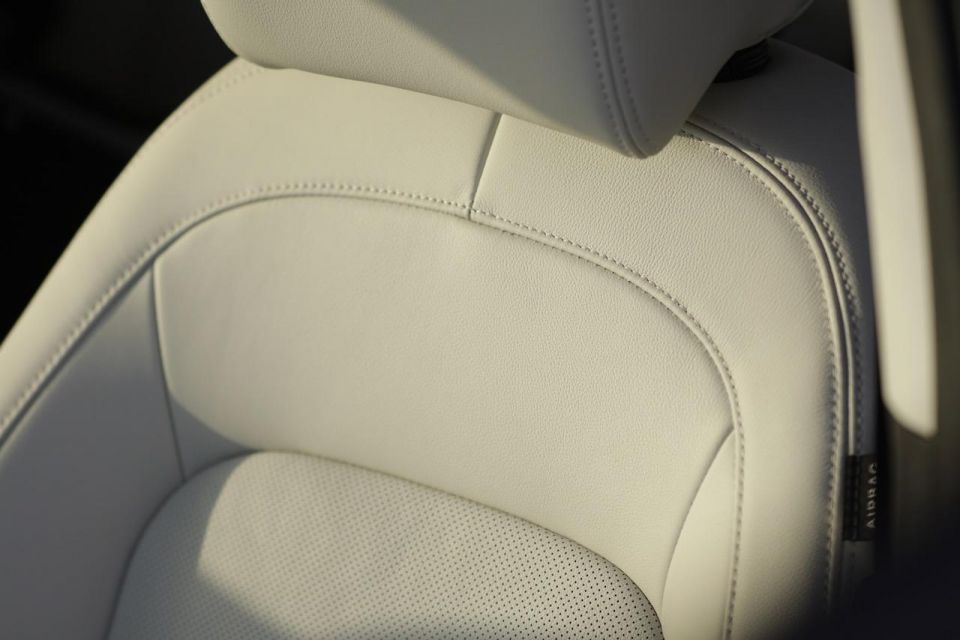
The only options available for new Kona are premium paint across the range for $595 and a two-tone beige leather interior for the Highlander, priced at $295.
Comparisons with key rivals will likely include the Kia Seltos priced from $25,990 for the Seltos S, through to the range-topping GT-Line at $41,400 before on-road costs. Keep in mind Kia also does sharp national drive-away deals and packs a seven-year warranty.
Mazda weighs in with its CX-30 ranging from $29,990 for the base G20 Pure FWD to $46,490 for the range-topping X20 Astina AWD.
The bargain-priced Mitsubishi ASX offers a lower $23,900 entry point for the ES, while the top-shelf Exceed is yours for just $33,240 plus on-road costs.
Lower again, is fledgling Chinese-owned brand MG with its ZS starting from just $20,990 and climbing as high as $46,990 for the full EV model.

Buy your new car without the stress. It's fast, simple and completely free.

Great service from Travis and team, second time I have used this business would not hesitate to recommend them to anyone
Craig C.
Purchased a Ford Ranger in Sunshine Coast, QLD
CarExpert helped Craig save thousands on his Ford Ranger, now let us save you on your next new car.
Find a dealFor starters, the four front-wheel variants that employ the naturally-aspirated SmartStream 2.0-litre naturally-aspirated petrol continue with a torsion-beam rear axle, while adopting the same suspension tune as the superseded model.
That’s different to the new all-wheel drive N Line and N Line Premium, which feature a turbocharged 1.6-litre turbocharged motor exclusively and use a more sophisticated dual-arm multi-link rear suspension along with a unique calibration for the front struts.
They also benefit from premium Continental brand tyres, as does the Highlander variant.
Even the base Kona features as extensive inventory of standard equipment including an 8.0-inch touchscreen infotainment system with wireless Android Auto and Apple CarPlay, a rear-view camera, wireless phone charging, an electronic park brake, tyre-pressure monitoring, roof rails, and 16-inch alloy wheels.
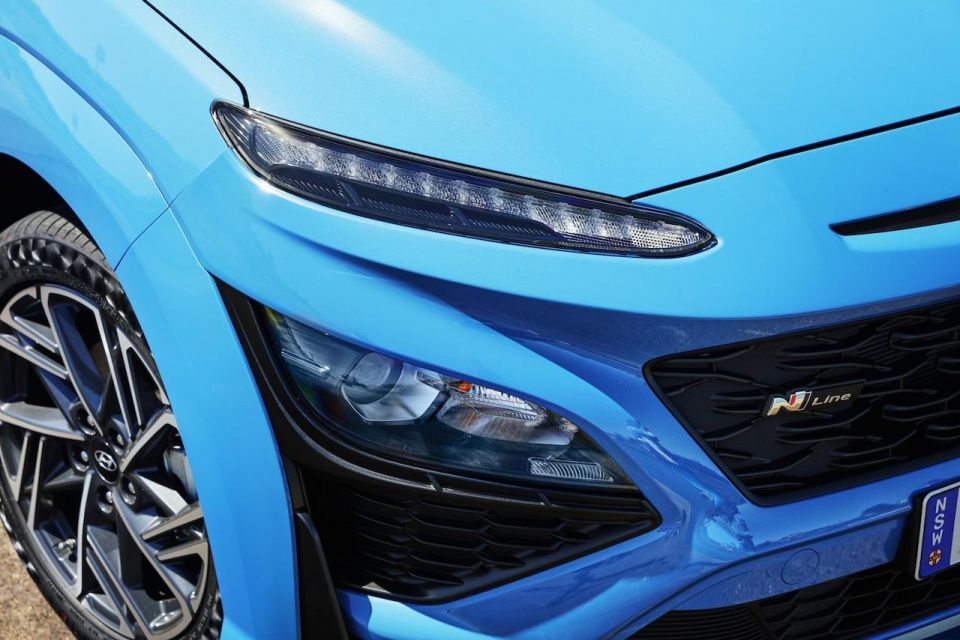
There’s also auto headlights, a six-speaker audio system, LED daytime running lights, and a drive-mode selector rounding out the highlights.
Also standard across the Kona range is a suite of active safety systems which packages autonomous emergency braking, lane following assist, active cruise control with stop/go and rear occupant alert. Additionally, the Kona gets driver attention warning, lane-keep assist as well as front, side and curtain airbags.
Stepping up to the Kona Active improves brings leather-appointed seats, a leather-wrapped steering wheel and gearshift, rear parking sensors, power-folding and heated side mirrors, bigger 17-inch wheels and rear privacy glass.
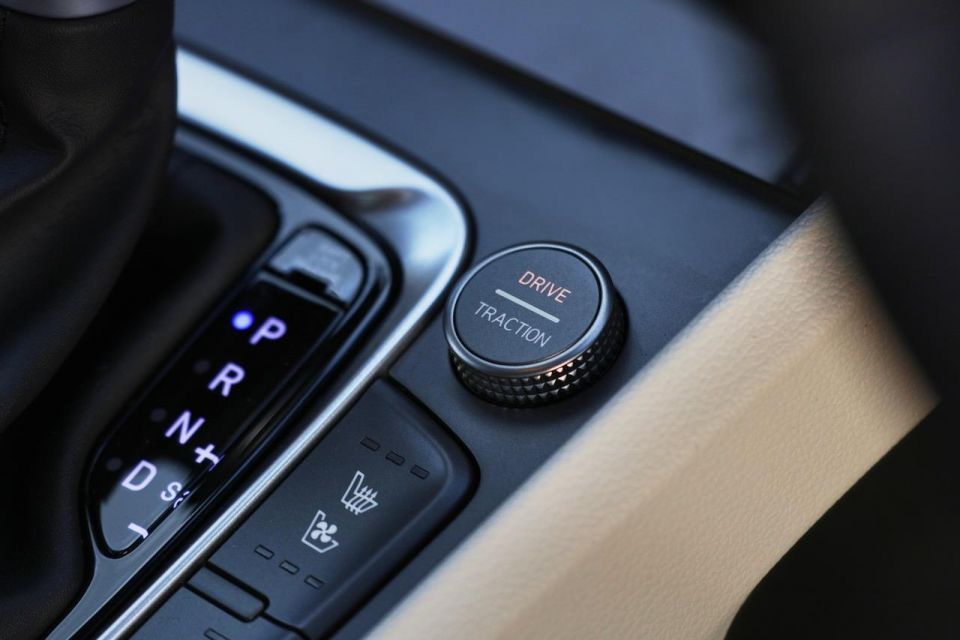

Choosing the Elite adds a larger 10.25-inch touchscreen infotainment system with satellite navigation, (and switches to wired Android Auto/Apple CarPlay), an upgraded eight-speaker Harman Kardon sound system, remote start (using the key fob), keyless entry and start, front fog lights and rain-sensing wipers, DAB radio and single-zone climate control.
Safety technology is also beefed up with the Elite gaining blind-spot assist, rear cross-traffic alert, and safe exit warning systems.
The flagship Highlander encompasses a raft of luxury features, such as a 10.25-inch fully-digital and mildly-configurable instrument display, heated and cooled front seats, heated rear outboard seats and heated steering wheel, as well as LED headlights, front indicators and tail lights.
You also get a colour head-up display, front parking sensors, electrically-adjustable front seats (10-way for driver’s seat, eight-way for passenger seat), a sunroof, high-beam assist, and 18-inch alloy wheels.
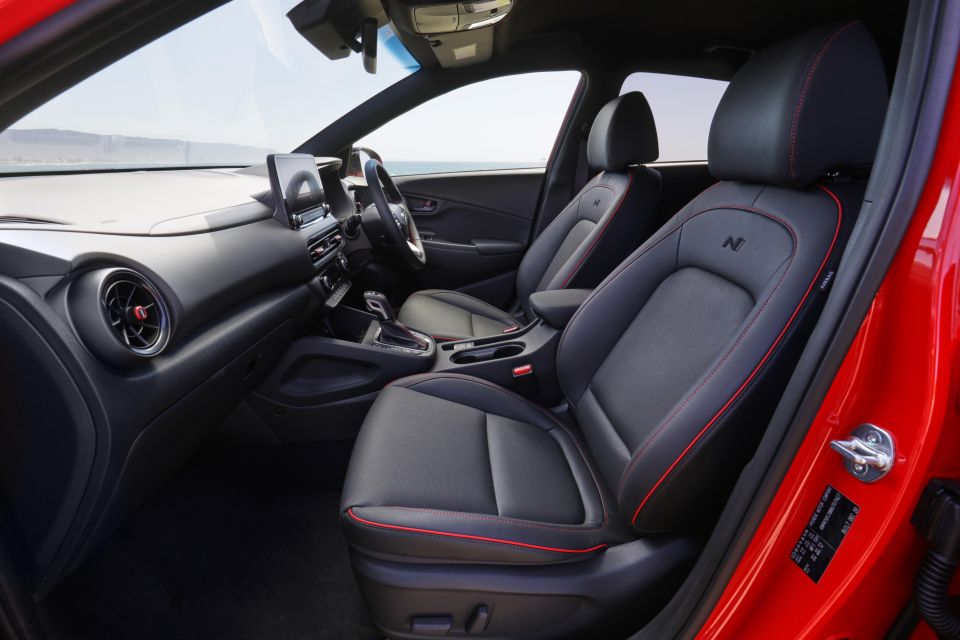

Apart from its uprated drivetrain, the sportier N Line drops the specification levels back to the Elite but adds front sports seats with red stitching, piping and trim inserts, alloy pedals as well as N Line badging and body kit.
The N Line Premium basically mirrors the Highlander spec trim that includes kit such as heated and cooled front seats, a heated steering wheel, electrically-adjustable front seats, alloy pedals, a sunroof, ambient lighting, a head-up display, DAB+ radio, a digital instrument cluster, and single-zone climate control.
There’s also a two-tone roof available as a no-cost option for the Highlander and N Line Premium variants, though choosing it also deletes the sunroof.
Kona buyers can choose between seven exterior paint colours for 2021 including Atlas White, Dark Night, Phantom Black, Surfy Blue, Dive in Jeju, Vivid Rouge, Ignite Flame and Pulse Red.
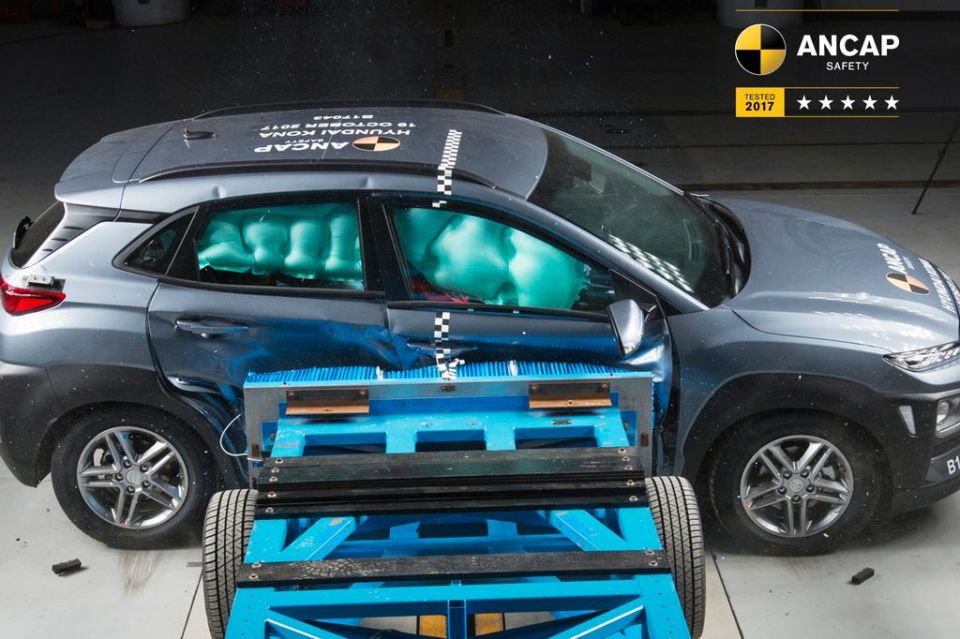
The Hyundai Kona was last tested by ANCAP in 2017 (launch year) achieving a five-star safety rating with an overall score of 35.07 out of 37.00.
The rating was based on a frontal offset score of 14.07 out of 16 and a side impact score of 16 out of 16. Whiplash and pedestrian protection were rated Good and Acceptable, respectively.
All 2021 Hyundai Kona variants come with standard autonomous emergency braking with pedestrian and cyclist detection, lane-following assist and front, side and curtain airbags.
Elite trim and up get blind-spot assist, rear cross-traffic assist, and safe exit warning.
Additionally, all Hyundai Kona models have three top-tether and two ISOFIX anchor points for child seats in the rear.

Regardless of which Kona variant you choose, you’re getting a smart-looking cabin that looks and feels hip and contemporary with quality materials and a visibly attractive design.
Even the cloth seats with contrasting cushions in the base Kona won’t disappoint, though the black leather in the Kona Active looks decidedly more premium. You might want to consider the fact the Active also gets a rear-seat armrest with cupholders.
Overall, it’s an uncluttered layout that’s easy to get your head around, even with the higher trim levels of Elite and Highlander. There’s still liberal use of hard plastics on the dash and door cards but they’re far from cheap looking or to the touch.

The 8.0-inch touchscreen on the Kona and Active variants is a welcome step up from the smaller screen in the previous model, but the bigger 10.25-inch display in the Elite and up looks decidedly better and works exceptionally well with good resolution and response rates.
I’m also a big fan of the digital instrument cluster for its clarity, colour and configurability via the rotary drive-mode selector besides the refreshingly-familiar shift lever.
Disappointingly though, there’s only a single USB-A port up front and in the rear, at a time when many carmakers are choosing to update with more convenient USB-C ports. It’s also flanked on both sides by two somewhat useless 12V receptors, and there’s still no rear air vents for kids on hot days.
Seems like an oversight to me.
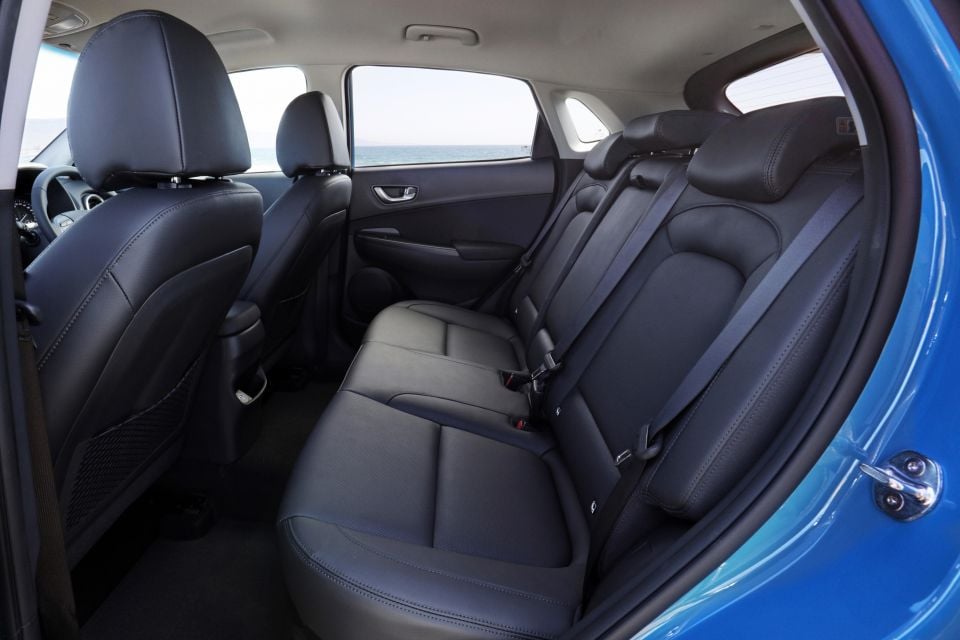
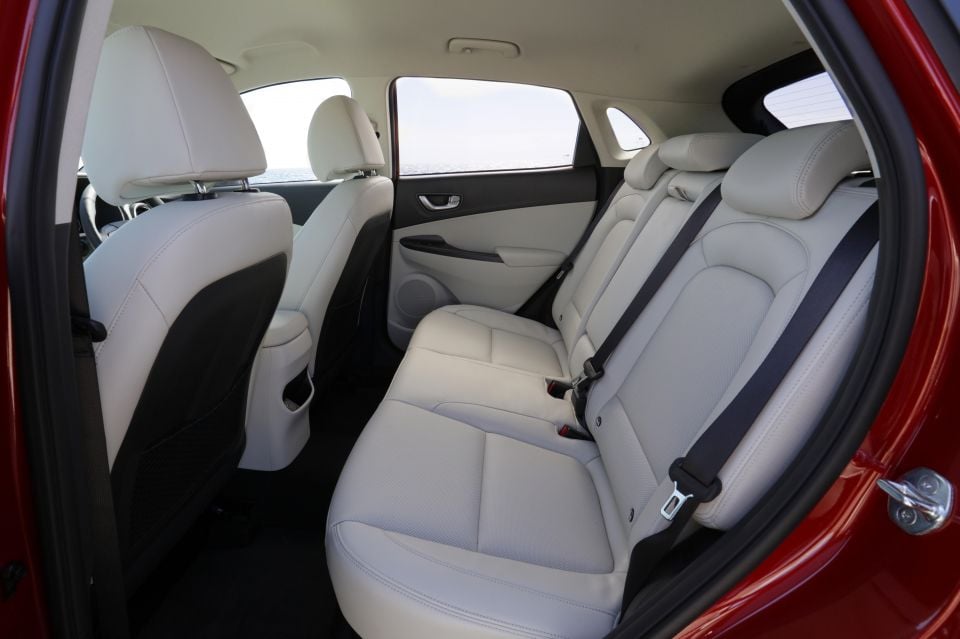
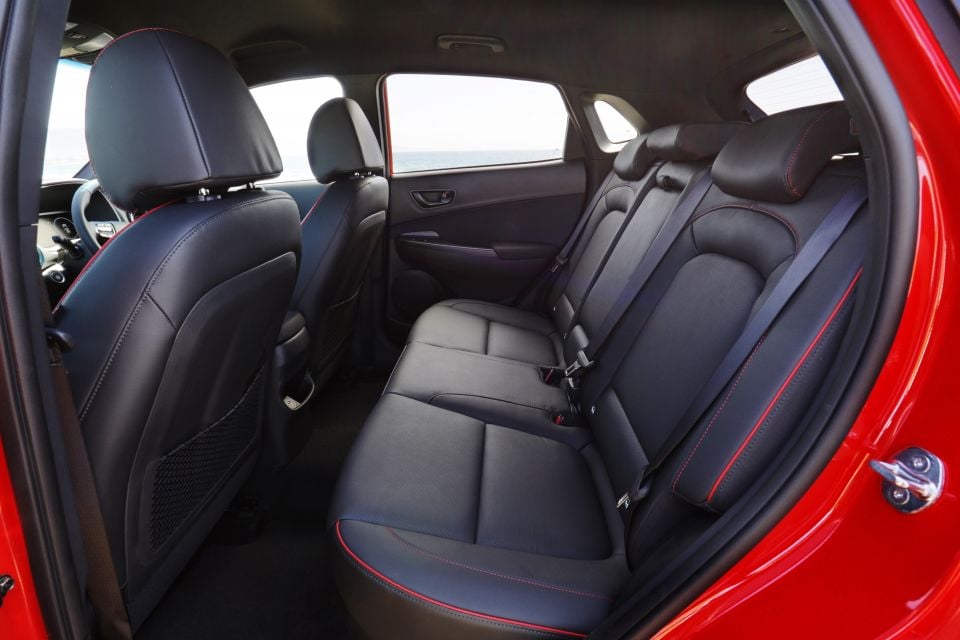
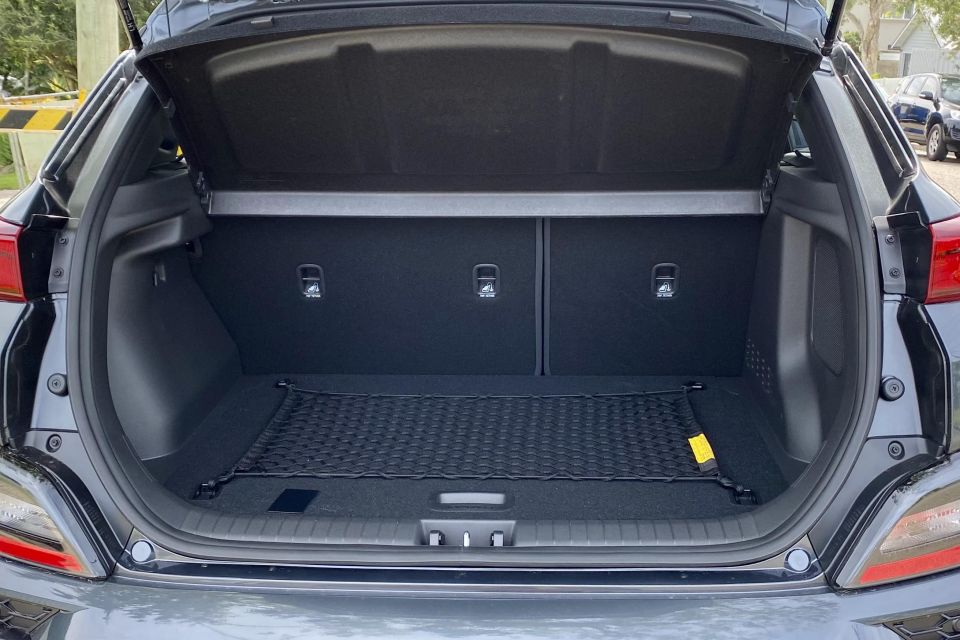
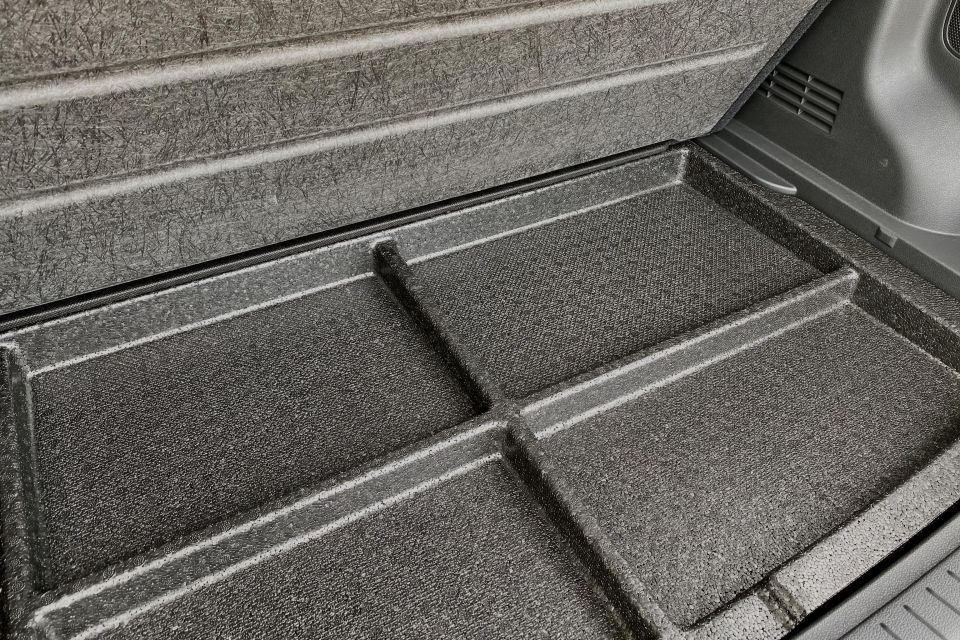
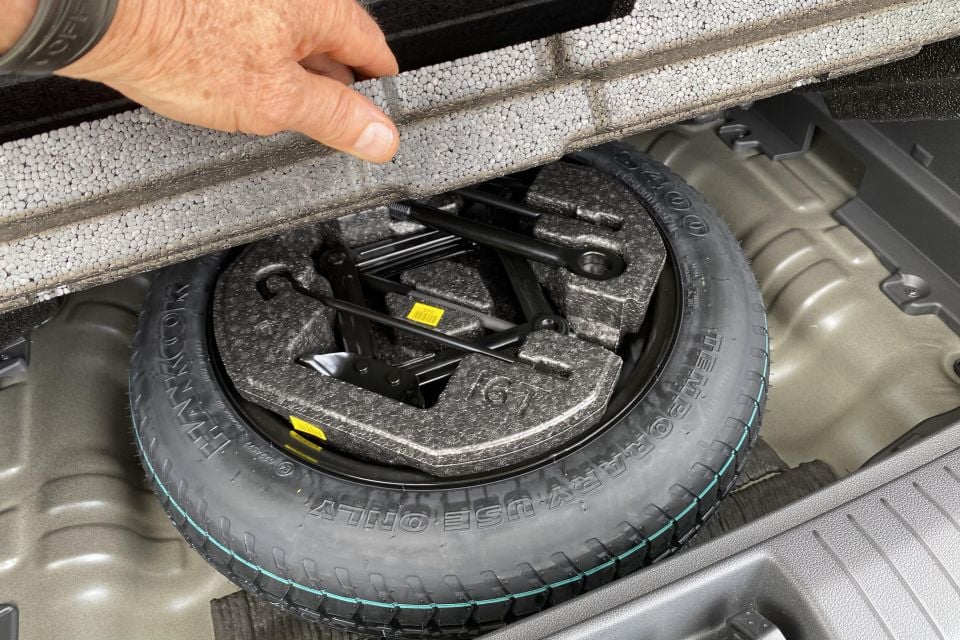
Then there’s the issue with Kona’s interior space – specifically, boot space. The standard Kona models are slightly longer, growing in length from 4165mm to 4205mm, while the N Line versions stretch to 4215mm thanks to the new body work.
As a result, there’s a marginal increase in boot space from 361 litres in the previous model to 374 litres for 2021. It’s still going to be tight for new parents and the kit they need to lug around.
That said, folding the rear seats has also seen a slight increase from 1143 litres to 1156 litres, while rear leg room has grown from 880mm to 893mm, which I’d call adequate behind my own driving position.
By way of comparison, the Kia Seltos gets 433 litres behind the rear seats, expanding to 1393 litres when folded flat. It’s a longer vehicle by some margin.
The versatile Skoda Kamiq comes with a minimum 400 litres, expanding to 1395L with the second row folded, while the Mitsubishi ASX benefits from 393L of boot space growing to 1143L with the rear seats flat.
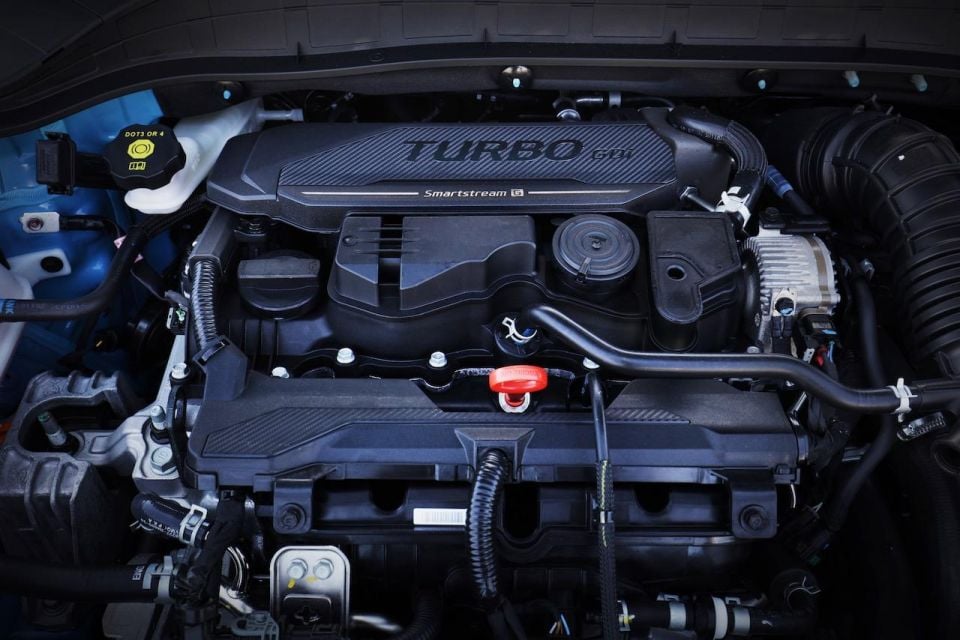
Purchase the 2021 Kona in Kona, Active, Elite or Highlander trim and you’ll get Hyundai’s SmartStream 2.0-litre Atkinson cycle naturally-aspirated petrol engine making 110kW of power at 6200rpm and 180Nm of torque from 4500rpm, driving the front wheels exclusively through a CVT automatic.
The updated SmartStream version of this engine returns a claimed 14 per cent improvement in fuel efficiency over with the previous iteration, returning 6.2L/100km on the combined cycle.
Choose either of the N Line versions and there’s a you get a 1.6-litre turbocharged four-cylinder petrol producing 146kW at 6000rpm (up from 130kW), and 265Nm from 1600-4500rpm.
Drive is sent to an on-demand all-wheel drive system via a seven-speed dual-clutch auto. The more powerful version claims fuel consumption of 6.9L/100km and CO2 emissions of 156g/km.
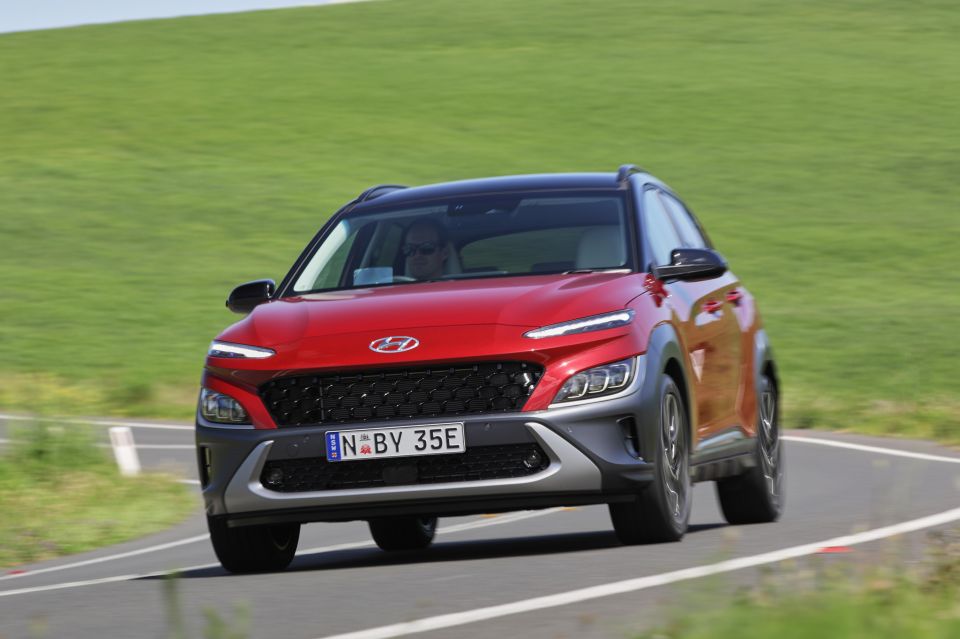
Where expert car reviews meet expert car buying – CarExpert gives you trusted advice, personalised service and real savings on your next new car.
While we didn’t get to sample all variants on the road, first cab off the rank for me was the top-spec Highlander with a naturally-aspirated 2.0-litre petrol with CVT.
Thinking it was a cost-cutting move, I wasn’t expecting good things. How wrong perceptions can be. The fact is I was pleasantly surprised as this is definitely one of the more refined CVTs in the segment.
Normally, I’m fearfully anticipating a racket from under the bonnet after giving it more and more throttle to get up to pace at a decent clip. There’s really none of that – it’s relatively quiet and very much in the background while working in concert with the powertrain.
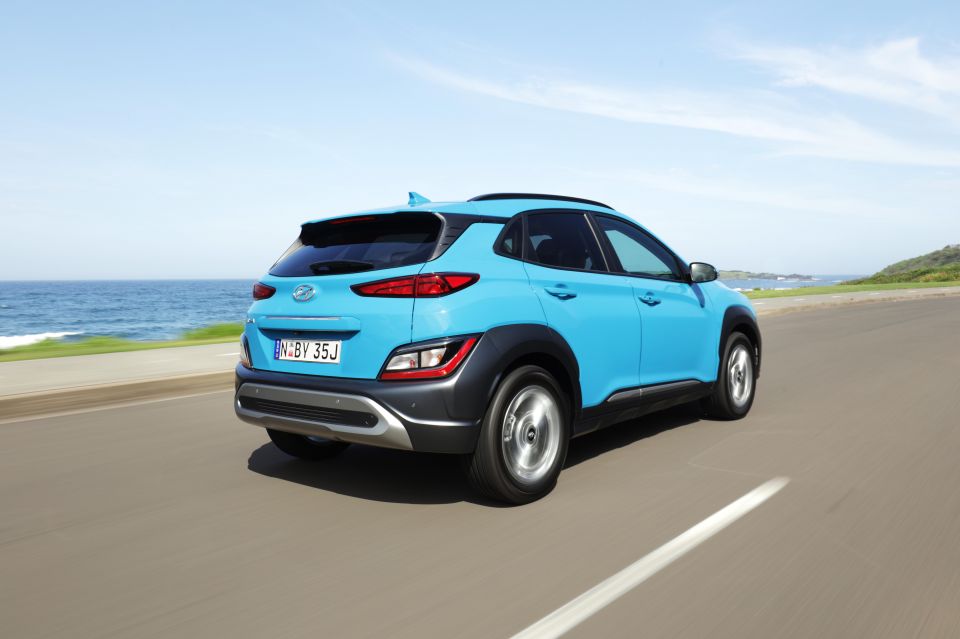
There’s good reason for that, as this particular CVT has been calibrated to mimic a conventional automatic transmission – featuring eight virtual gears and a sequential manual mode – and it does a damn good job of it. I certainly can’t call it out as anything but perfectly acceptable. It’s excellent, even.
It goes well too, despite its relatively modest outputs, with decent throttle response even when you have to give it a boot full up a steep incline, for example, as we did often on the drive route.
The Kona gets extra sound deadening and improved insulation compared to the old model, and that’s something you’re definitely aware of under higher loads.
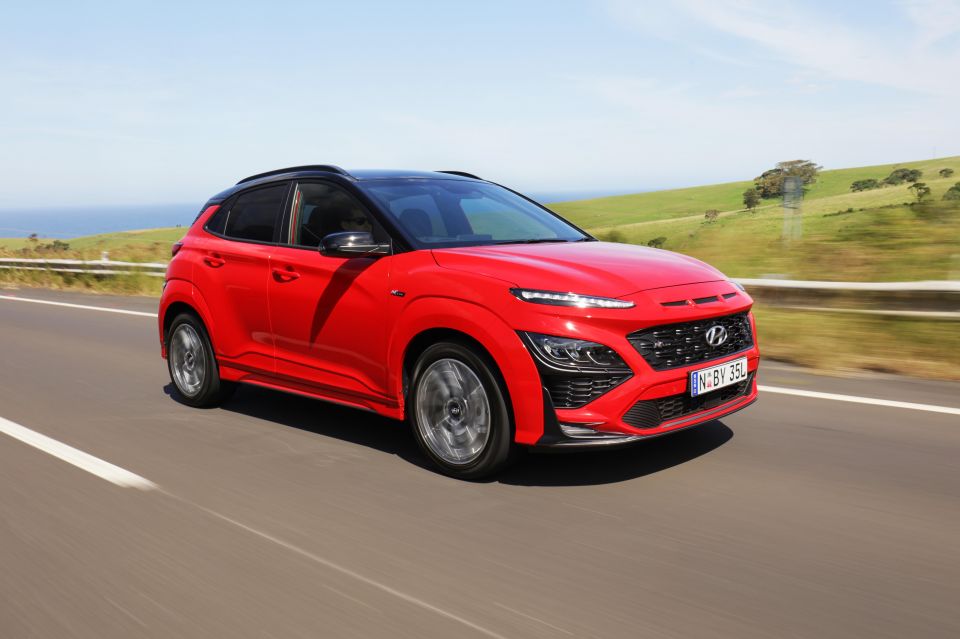
Swapping into the N Line Premium, the extra poke is immediately felt. Not only that, it’s more the fact the turbocharged power keeps on pulling for quite effortless driveability on freeways and across some quite marvellous country B-roads.
Pity the N Line doesn’t get paddle shifters for a more engaged drive experience, but at least it rev matches in Sport and you can easily scroll through the various drive modes on offer.
Sure-footed handling is another area where Kona has always excelled – and that hasn’t changed one bit.
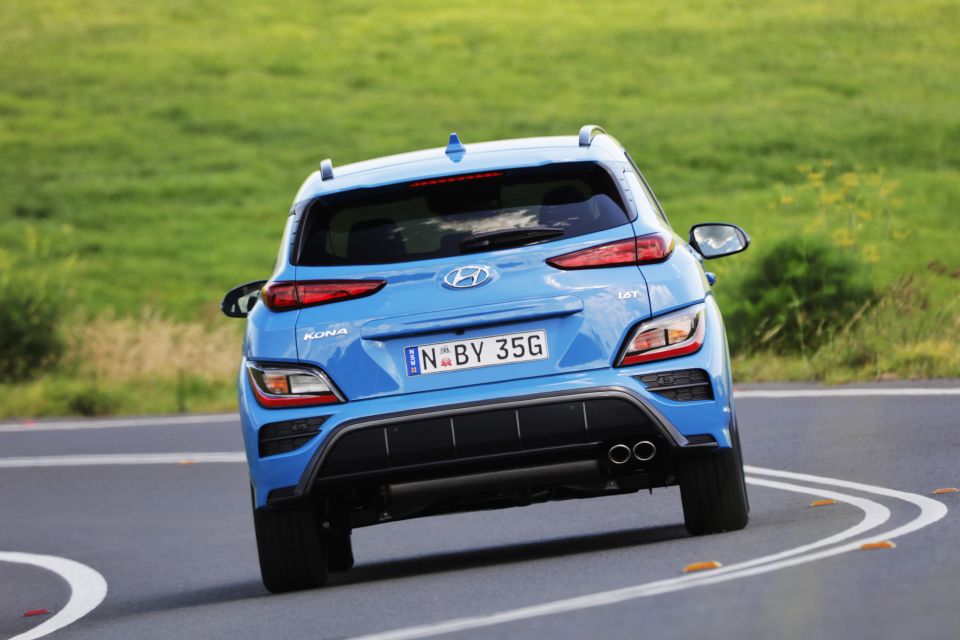
This is a fun little car to have a bit of a punt in, but it also feels incredibly well put together around town with virtually no body roll, even on the non-N Line models.
It’s a combination of keen steering feel and response and a locally-tuned suspension system that creates for a good balance between handling and ride comfort.
I especially like that balance in the N Line versions for their poise and compliance over pretty average surfaces, including a 14-kilometre gravel section of road we covered during the launch drive route.
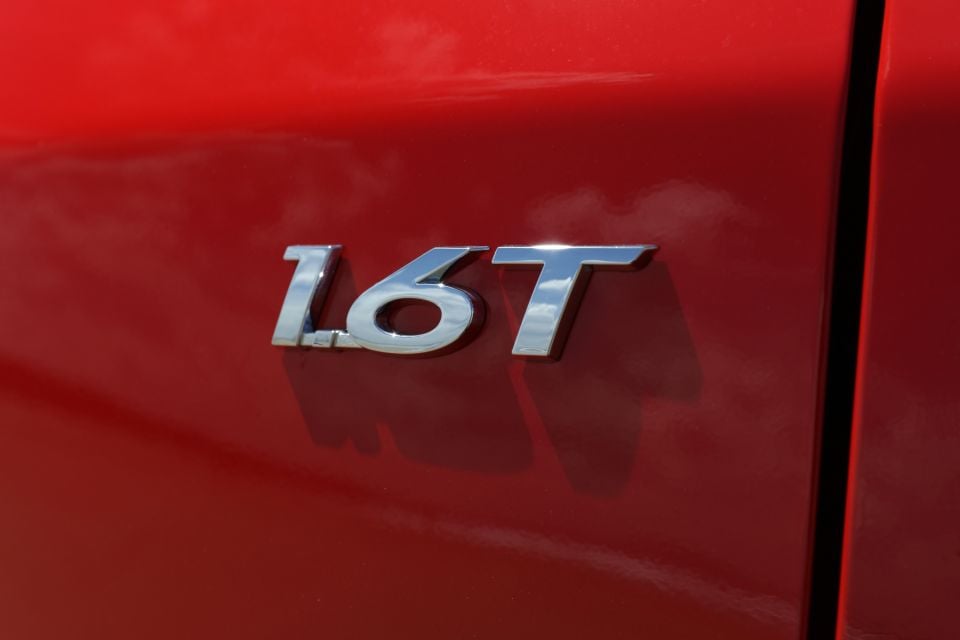
Hyundai is still to confirm capped-price servicing costs for the 2021 Kona, suffice to say we have been advised these will be communicated shortly.
As with Hyundai passenger vehicles across the range, the new Kona is covered by a five-year, unlimited-kilometre warranty, with services required every 12 months or 10,000km for the 1.6T and 12 months or 15,000km in the 2.0-litre model.
Stay tuned for an update with service pricing for the 2021 Hyundai Kona range.

The new Kona delivers big improvements in design, technology, safety and powertrains, but it also carries a bigger price tag, by as much as $2300.
Either way, I’m 100 per cent sold on the styling – inside and out – it’s a smart look, and it goes and rides as well as anything in the class.
However, it falls short of most of its rivals when it comes to boot space and let’s not forget the omission of rear air vents and just two USB ports covering both seating rows.
I also take issue with the fact that you can no longer have a Highlander with the 1.6-litre turbo four mated to a seven-speed dual-clutch auto with all-wheel drive. I guess you’ll just have to buy the N Line Premium.
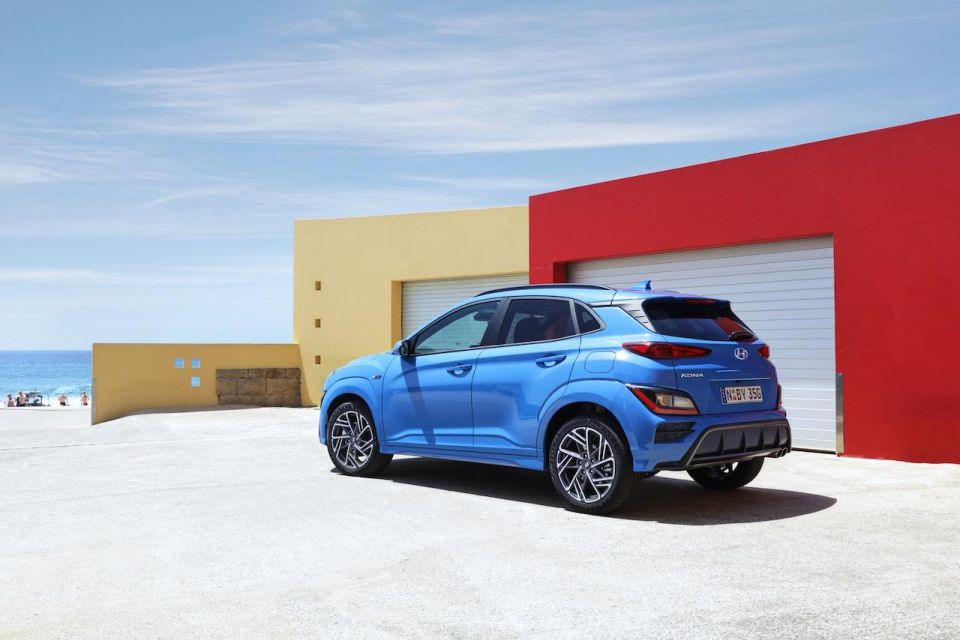
Click the images for the full gallery
MORE: Hyundai Kona news and reviews MORE: Everything Hyundai
Where expert car reviews meet expert car buying – CarExpert gives you trusted advice, personalised service and real savings on your next new car.
Anthony Crawford is a CarExpert co-founder and senior presenter with 20+years in automotive journalism and content creation.


William Stopford
11 Hours Ago


CarExpert.com.au
3 Days Ago


Damion Smy
4 Days Ago


Damion Smy
4 Days Ago


Josh Nevett
4 Days Ago


Max Davies
5 Days Ago